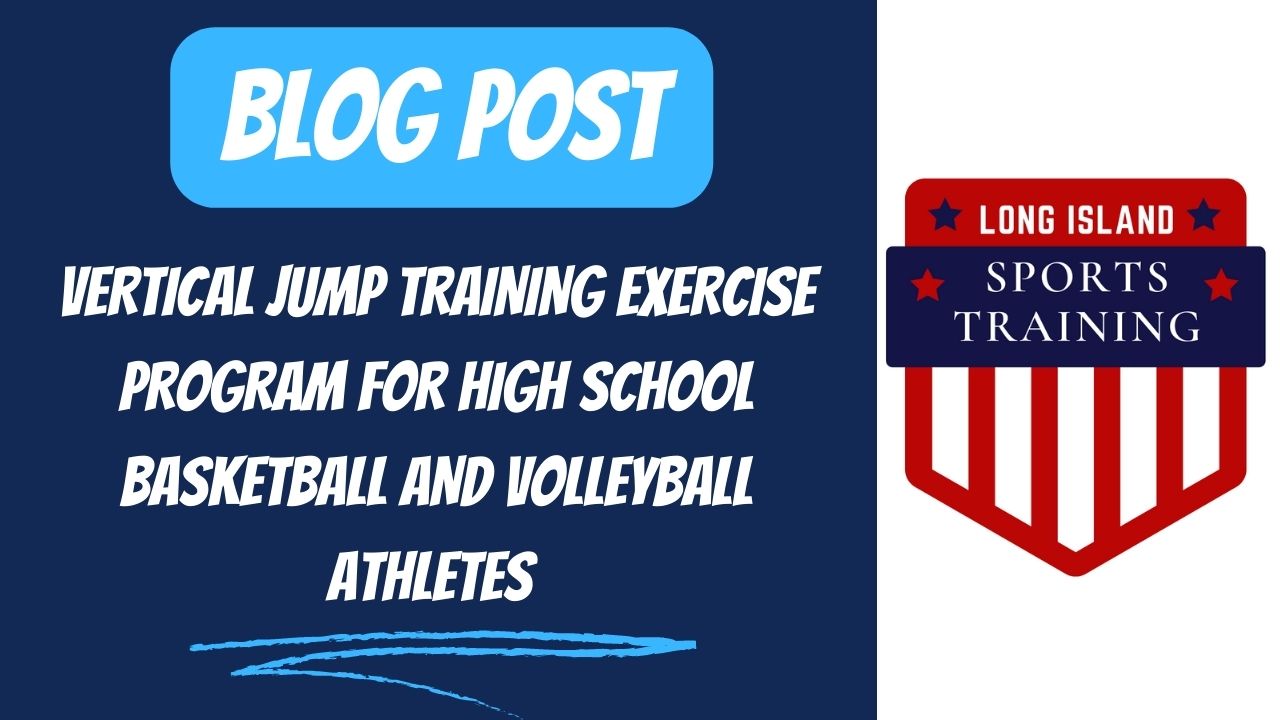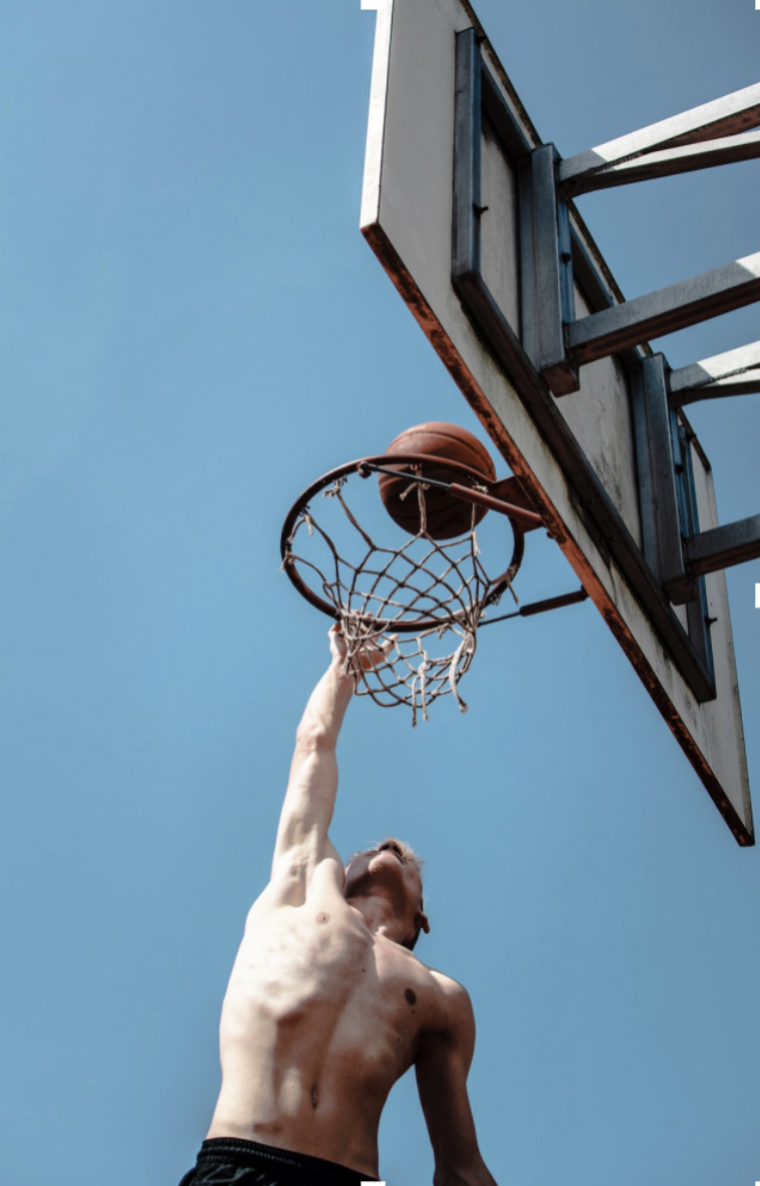Vertical Jump Training Exercise Program For High School Athletes
 Vertical Jump Training Exercise Program For High School Basketball and Volleyball Athletes
Vertical Jump Training Exercise Program For High School Basketball and Volleyball Athletes
This blog post explores the numerous benefits of a Vertical Jump Training Exercise Program for High School Basketball and Volleyball Athletes, shedding light on the importance of this specialized training regimen.
In the competitive world of high school basketball and volleyball, an athlete’s ability to jump higher can be a game-changer. A solid vertical jump not only enhances an athlete’s performance but also opens doors to new opportunities on the court.
Benefits Of A Vertical Jump Training Exercise Program For Basketball And Volleyball Athletes
The benefits of a vertical jump training exercise program can be numerous and abundant. Therefore, I have listed 10 of the most effective benefits from incorporating a jump training program into your basketball or volleyball fitness training sessions.
- Increased Vertical Leap: A vertical jump training program is designed to focus on strengthening the muscles responsible for leaping and jumping. Consistent training enables athletes to develop explosive power in their legs, leading to a remarkable increase in their vertical jump. As a result, they can reach higher and spike more effectively in volleyball, or excel at layups and dunks in basketball.
- Enhanced Athletic Performance: An improved vertical jump doesn’t only impact specific skills like blocking or rebounding; it also enhances an athlete’s overall performance. Better jump height means faster movements, improved agility, and heightened coordination on the court. This enhanced athleticism can give high school athletes a significant competitive advantage.
- Injury Prevention: A well-structured vertical jump training program emphasizes proper form and technique, which can help reduce the risk of injuries. Strengthening the lower body muscles, tendons, and ligaments can lead to better stability and reduced strain during high-intensity movements.
- Psychological Boost: Seeing tangible improvements in their vertical leap can provide athletes with a significant psychological boost. The increased confidence and self-belief can translate to better performances, making them more likely to take calculated risks and attempt ambitious plays during games.
- College and Scholarship Opportunities: High school athletes aspiring to play at the collegiate level know how important a standout vertical jump can be for recruiters. A strong vertical leap showcases an athlete’s potential and dedication to their sport, potentially increasing their chances of securing scholarships and joining prestigious college teams.
- Versatility in Position: Both basketball and volleyball teams benefit from versatile players who can excel in multiple positions. A high vertical jump can open up opportunities for athletes to transition between roles and positions on the court, making them more valuable assets to their teams.
- Long-Term Benefits: The benefits of a vertical jump training program extend beyond the high school years. The foundational strength, conditioning, and explosiveness developed during this specialized training can lay the groundwork for a successful athletic career and lifelong fitness.
- Improved Rebounding Skills: Rebounding is a crucial aspect of both basketball and volleyball. With a higher vertical jump, athletes can better position themselves under the basket or at the net, allowing them to grab rebounds more effectively. This ability to secure possession for their team can greatly influence the flow and outcome of a game.
- Increased Block and Spike Height: In volleyball, blocking and spiking are pivotal offensive and defensive techniques. A vertical jump training program helps athletes generate more power and height in their jumps, enabling them to reach over the net for blocks or deliver powerful spikes that are more challenging for opponents to defend against.
- Enhanced Core Strength: A significant part of vertical jump training involves core strengthening exercises. As athletes work on their core muscles, they improve their balance and stability, leading to better body control during jumps and landings. This enhanced core strength not only benefits their vertical jump but also contributes to their overall athletic performance in the respective sports.
By incorporating jump training into your fitness sessions, high school basketball and volleyball athletes can continue to elevate their skills and make a lasting impact on the court.
Jump Exercises For Vertical Leap Gains and Explosiveness

Here are the top 10 vertical jump exercises that can help high school basketball and volleyball athletes enhance their explosiveness and jumping ability:
- Squat Jumps: Stand with feet shoulder-width apart, perform a squat, then explode upward into a jump as high as possible. Land softly and immediately go into the next repetition.
- Depth Jumps: Stand on a box or platform, step off, and as soon as you touch the ground, explode upward into a jump. This exercise focuses on improving the stretch reflex in the muscles.
- Box Jumps: Stand in front of a sturdy box or platform, and with a quick countermovement, jump onto the box, then step down and repeat.
- Bulgarian Split Squats: Stand in a lunge position with one foot elevated behind you, lower into a lunge, and then push off the ground to jump explosively. Alternate legs for each repetition.
- Single-Leg Hops: Hop forward, backward, or laterally on one leg, focusing on maximum height and control in each hop. Switch legs and repeat.
- Power Cleans: This Olympic lift develops explosive power in the lower body. It involves lifting a barbell from the floor to shoulder height in one explosive motion.
- Jump Rope: Skipping rope is an excellent way to improve foot speed and calf muscle strength, both of which contribute to a higher vertical jump.
- Medicine Ball Throws: Perform overhead medicine ball throws against a wall or with a partner to develop upper body power that complements the lower body explosiveness.
- Calf Raises: Strengthen the calf muscles by standing on a step or elevated surface and lifting yourself up onto your toes. Lower back down and repeat.
- Resistance Band Squats: Use resistance bands around your waist or attached to a squat rack while performing squat jumps to add extra resistance and challenge to the exercise.
Remember to warm up properly before starting these exercises, and gradually increase the intensity and difficulty to avoid injuries. A well-rounded vertical jump training program that incorporates these exercises can lead to significant improvements in an athlete’s vertical leap over time.
Benefits Of Incorporating Speed and Agility Into Your Vertical Jump Training Program
Incorporating speed and agility training alongside jump training sessions can bring numerous benefits for high school basketball and volleyball athletes:
- Enhanced Explosiveness: Speed and agility drills focus on quick bursts of movement and directional changes, which complement the explosive nature of jump training. By combining these elements, athletes can develop a well-rounded athleticism that translates into a more powerful and dynamic vertical jump.
- Improved Body Control: Speed and agility exercises require athletes to maintain balance and coordination while executing rapid movements. This helps improve body control, which is crucial for precise take-offs and landings during jumps, reducing the risk of injuries.
- Increased Quickness and Reaction Time: Speed and agility training sharpens an athlete’s reflexes and reaction time. This heightened responsiveness allows them to react more swiftly to on-court situations, whether it’s grabbing a rebound, intercepting a pass, or blocking an opponent’s shot.
- Better Footwork: Speed and agility drills focus on footwork patterns, lateral movements, and changes of direction. This leads to more efficient footwork during jumping motions, contributing to a more effective and higher vertical leap.
- Sports-Specific Conditioning: Basketball and volleyball require athletes to constantly change directions and move explosively in short bursts. By integrating speed and agility training, athletes can better condition their bodies for the specific demands of these sports, leading to improved overall performance.
- Versatility in Play: Athletes who possess both vertical jump power and agility have a competitive advantage. They can transition smoothly between different positions, adapt quickly to various game scenarios, and excel in different roles on the court.
- Mental Toughness: Speed and agility training can be physically demanding and mentally challenging. Overcoming these challenges builds mental toughness, enabling athletes to push through fatigue and adversity during games, ensuring they maintain their best performance throughout.
- Injury Prevention: Speed and agility training typically involves warm-up drills and dynamic movements that help reduce the risk of injury by preparing the body for the high-intensity exercises that follow. A well-conditioned body with improved strength and flexibility is less susceptible to strains and sprains.
- Fun and Engaging Workouts: Incorporating a variety of training methods keeps workouts fresh and exciting. Speed and agility exercises introduce an element of playfulness and enjoyment, motivating athletes to stay engaged and committed to their training routine.
- Competitive Edge: Athletes who focus on both vertical jump and speed/agility training gain a competitive edge over opponents who might only focus on one aspect. The combination of explosive power and quickness makes them stand out on the court, giving their team an advantage in tight games.
By integrating speed and agility training with jump training sessions, high school basketball and volleyball athletes can maximize their athletic potential, elevate their performance, and unlock new heights in their sporting journey.
Conclusion
For high school basketball and volleyball athletes, a well-structured Vertical Jump Training Exercise Program can vastly improve your game.
From increasing your vertical leap and enhancing overall performance to reducing the risk of injuries and unlocking new opportunities, the advantages of this training regimen are undeniable.
By committing to this specialized program, young athletes can reach new heights and elevate their game, propelling them towards success on and off the court.
Note: Always consult with a healthcare professional or fitness expert before starting any new exercise program, especially if you have any pre-existing medical conditions or injuries.
Let’s Talk: Contact Tim @ Long Island Sports Training
If you are looking for local individual jump, strength and agility fitness training sessions to help you reach peak performance contact us:
Web Page:
https://longislandsportstraining.com/speed-and-agility-training/
Phone:
631-594-4048
Email:
Tim@LongIslandSportsTraining.Com
